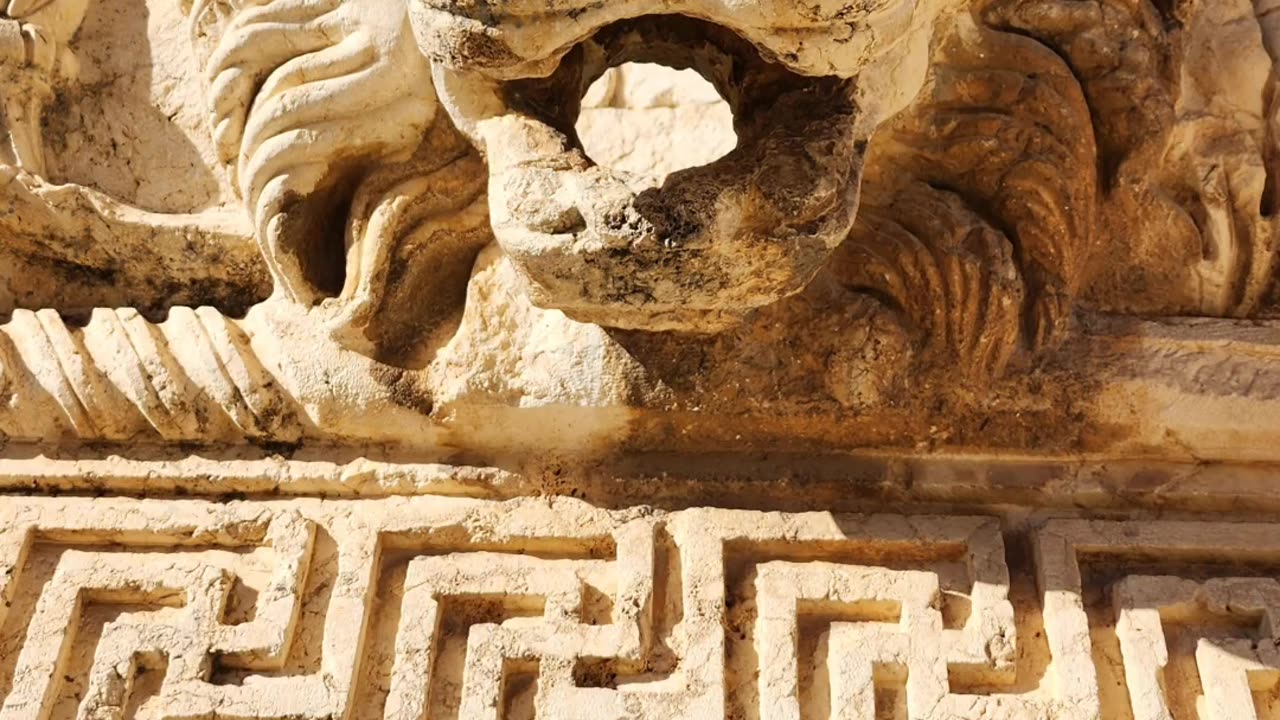Premium Only Content

Exploring the Majestic Baalbek Roman Ruins
The Baalbek Roman Ruins, located in Baalbek, Lebanon, are an extraordinary testament to the grandeur and architectural prowess of the Roman Empire. These ruins form one of the most impressive and well-preserved Roman temple complexes in the world.
The construction of the Roman ruins in Baalbek began during the 1st century BCE when the Romans conquered the region. Under the rule of Emperor Augustus, work commenced on a massive sanctuary dedicated to Jupiter, the Roman equivalent of Zeus. The Temple of Jupiter, also known as the Great Temple, stands as the centerpiece of the Baalbek complex.
The Temple of Jupiter at Baalbek is an awe-inspiring structure that showcases the remarkable engineering feats of the Romans. Its sheer size and scale are awe-inspiring, with the remaining columns reaching heights of over 20 meters (66 feet). The temple's podium and foundation were built upon a massive stone platform, and its grand entrance was adorned with intricate carvings and decorative elements.
One of the most iconic features of the Baalbek Roman Ruins is the Trilithon, a group of three enormous stones located on the western side of the Temple of Jupiter. These monoliths weigh an estimated 800 to 1,000 tons each and are among the largest megalithic stones ever used in construction. The transportation and placement of these colossal stones remain an engineering mystery to this day.
Adjacent to the Temple of Jupiter is the Temple of Bacchus, dedicated to the Roman god of wine. The Temple of Bacchus is remarkably well-preserved and showcases the Romans' exceptional craftsmanship. Its intricate reliefs, detailed carvings, and elegant architectural elements make it a remarkable example of Roman temple design.
While the Temple of Jupiter and the Temple of Bacchus are the most prominent structures, the Baalbek complex also includes the ruins of the Temple of Venus. Although less preserved, it still provides insight into the grandeur and architectural style of the Roman period.
Images & Video by Haytham Dalank
hdalank.com. 2023
-
 LIVE
LIVE
ItsLancOfficial
9 hours agoFREAKY FRIDAY-GETTING FRIED-WELP! #TOTS
93 watching -
 1:09:11
1:09:11
Sarah Westall
5 hours agoRead the Signs: Are We Already Operating in a New Financial System? w/ Andy Schectman
20.7K4 -
 1:32:53
1:32:53
Flyover Conservatives
9 hours agoRicky Schroder Exposes How Hollywood Planted Him as a Child Star | FOC Show
31.3K3 -
 LIVE
LIVE
JahBlessCreates
3 hours ago🎉 TEKKEN TING, and maybe some music...
189 watching -
 LIVE
LIVE
GritsGG
4 hours agoTop 250 Ranked Grind! Dubulars!🫡
56 watching -
 LIVE
LIVE
StuffCentral
3 hours agoStar Stuffy
22 watching -
 6:02
6:02
Blackstone Griddles
5 hours agoPrime Rib Brisket Burgers on the Blackstone Griddle
7.29K2 -
 LIVE
LIVE
HELMETFIRE
3 hours ago🟢HELMETFIRE PLAYS: Silksong Part 4🟢
39 watching -
 1:14:07
1:14:07
Glenn Greenwald
10 hours agoGlenn Takes Your Questions: Billionaires, Bari Weiss and Journalism | SYSTEM UPDATE #509
69.5K34 -
 LIVE
LIVE
StevieTLIVE
4 hours agoFriday Night HYPE Warzone Games with Stevie
134 watching